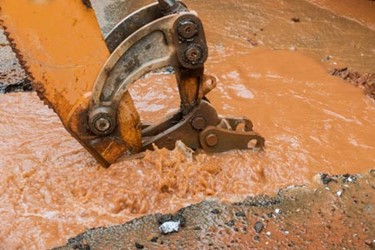AWWA Offers Comprehensive Approach To Water Main Assessments

By Joe Cogliano

Municipalities have a new resource in the battle to stretch their water utility capital and maintenance dollars as far as possible.
AWWA recently released its first edition of the M77 Condition Assessment of Water Mains. The publication is designed to help water management professionals make better investment decisions by significantly improving their ability to estimate the lifespan of mains. Oversight of these pipelines is a key facet of asset management, which has become critical as most water systems are dealing with aging infrastructure, growing demand, and tighter budgets.
“By performing condition assessment strategically and smartly, municipalities can save money on both replacement and repairs,” said Dan Ellison, a senior associate with HDR and founding chair of the AWWA water main condition assessment committee.
M77 provides technical information about a variety of water main assessment methods as well as practical information about how those technologies can be deployed. The manual also covers steps to build a condition assessment program, such as developing the business case to gain stakeholder support.
Allowing water mains to leak and break has traditionally been recognized as the most economical form of pipeline management. Even when there has been an intervention, it’s typical for water managers to replace a large section of water main based on multiple breaks. However, a proper assessment might reveal that only a small portion of main is in bad shape, which is common in areas where there are multiple soil types.
“I’ve seen where 2,000 feet of main has been replaced, when there was only about 200 feet of main that was bad,” Ellison said. “A more precise rehabilitation of that main would have yielded significant savings.”
More accurate assessments can also tell water managers when pipes that appear to be at the end of their lifespan can stay in service for decades longer, thereby avoiding an unnecessary expenditure, or are in such poor condition they demand attention quickly. The latter is important as planned water main replacements are less costly and impactful to the lives of stakeholders compared to spontaneous bursts.
“One of the big motivators of utilities is also to stay off the 6:00 news, and this is one way to do it,” Ellison said.
AWWA launched the effort to create the M77 publication because the subject of water main condition assessment is relatively new — so there was a scarcity of authoritative, peer-reviewed material — and the committee determined a standard was necessary to assist utilities across the country. The volunteer effort took about three years to complete and involved more than 100 people, including a core group of 30 who provided substantial support.
Information about inspection methodologies was vetted through utilities and engineering consultants with no vested interest, and the chapter authors and chapter leads were selected to avoid any conflict of interest, according to Ellison. The publication was also independently reviewed.
M77 Condition Assessment of Water Mains can be purchased in the AWWA Store. The full manual is available as a PDF download individually or as part of a set with a traditional hard copy.
